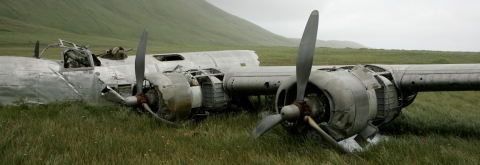Facility Activities
If you have 15-minutes:
Stop by the Alaska Maritime National Wildlife Refuge Visitor Center to pick up maps and brochures for the area. Can't make it to see us in person? Take a virtual 3D tour.
If you have one hour to a half day:
The Alaska Maritime National Wildlife Refuge Visitor Center takes you on a dramatic journey through the refuge's past and present and surrounds you with the sights, sounds (and even the smells of a seabird colony)...and invites you to follow biologists as their research ship sails to remote islands each year.
The Beluga Slough Trail is a roughly 1.2 mile gravel and boardwalk trail leading from the visitor center, through the slough, and down to Bishop’s Beach. Along the way you may see sandhill cranes, ducks, or shorebirds.
If you have a full day:
Tour boats leaving from Seward pass the Chiswell Islands and many other refuge islands with large colonies of seabirds and Steller sea lions. Smaller boats leaving from near our headquarters in Homer pass by small islets in Kachemak Bay or may go as far as the Barren Islands where millions of seabirds and marine mammals have safe harbor.
If you are ready for a multi-day adventure:
The Pribilof Islands are accessible via flights from Anchorage. The windswept islands have thousands of fur seals, millions of seabirds, and gorgeous scenery. St. Paul Island is home to the largest community of Unangax (Aleut) people and the native corporation offers guided tours. St. George Island has a much smaller human population but larger numbers of birds and easy birding opportunities within walking distance of lodging.
The Alaska Marine Highway's ferries and air carriers can transport you to communities near refuge lands such as Sitka, Seldovia, Kodiak, Chignik, Adak, Sand Point, King Cove, Cold Bay, False Pass, Akutan, and Unalaska. A few cruise ships visit more remote islands.




